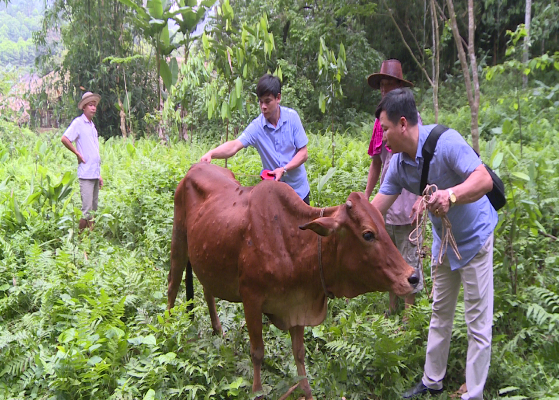December 20, 2025 | 19:38 GMT +7
December 20, 2025 | 19:38 GMT +7
Hotline: 0913.378.918
December 20, 2025 | 19:38 GMT +7
Hotline: 0913.378.918
On a Draft Circular on amending and supplementing of a number of articles under Circular No. 07/2016/TT-BNNPTNT dated May 30,2016 of the Ministry of Agriculture and Rural Development (MARD) on prevention and control of terrestrial animal disease, The MARD proposed to add Lumpy Skin Disease (LSD) to the list of terrestrial animal diseases subject to epidemic declaration.

MARD proposed to add Lumpy Skin Disease (LSD) to the list of terrestrial animal diseases subject to epidemic declaration. Photo: Khac Diep.
The disease appeared in Vietnam for the first time and has not been listed on terrestrial animal diseases subject to epidemic declaration under Circular No.07/2016/TT-BNNPTNT dated December 31, 2016 of the MARD.The Ministry of Agriculture and Rural Development (MARD) said that lumpy skin disease (LSD) was first confirmed in Vietnam in October, 2020. As of May 18, 2021, the nation recorded 1,946 outbreaks of LSD in 31 provinces and cities. Most of the cases infected with LSD were on cattle with 53,224 buffaloes and cows of which as many as 7,300 cattle have died so far due to LSD. The disease is at high-risk of spreading widely, affecting livestock industry in the coming time.
The MARD issued Official Dispatch No. 7575/CĐ-BNN-TY dated October 31, 2020, urging the People's Committee of central-governed provinces and cities to mobilize resources and immediately take measures to control and prevent LSD on cattle in accordance with the provisions of the Law on Animal Health including the establishment of Steering Committee on Prevention and Control of Animal Diseases as well as application of measures to destroy animals infected with LSD.
The Prime Minister on May 17, 2021 issued Official Dispatch No. 631/CĐ-TTg on focusing on drastic and simultaneous implementation of solutions in order to control and prevent LSD on livestock.
To have enough foundation to take preventive measures for LSD and support breeders suffering from losses due to the disease , the MARD proposed a Draft Circular on amending and supplementing of a number of articles under Circular No. 07/2016/TT-BNNPTNT dated May 31,2016 on the prevention and control of terrestrial animal diseases.
Accordingly, the MARD suggested adding LSD to Point 1.10 in Section 1 List of terrestrial animal diseases subject to epidemic declaration; to Appendix 01 List of terrestrial animal diseases subject to epidemic declaration; List of Disease Transmitted from Animals to Humans and List of animal diseases prohibited from slaughtering and treatment.
The prevention, control and application of mandatory measures for the animals infected with LSD should strictly follow the direction and guidance of the MARD and the Department of Animal Health.
Translated by Mai Tham

(VAN) As Viet Nam enters a new era, the national agricultural sector must proactively adapt to global trends to transform current challenges into strategic development opportunities.
/2025/12/18/5046-3-154320_307.jpg)
(VAN) Granting planting area codes is a solution that helps Lao Cai manage forests effectively while also laying a data foundation to support the development of the carbon credit market in the future.
/2025/12/16/3554-1-192458_116.jpg)
(VAN) Minister Tran Duc Thang held a working session with the Viet Nam Seaculture Association to discuss solutions for developing marine farming in a methodical, industrial, sustainable, and well-organized manner.

(VAN) Trading forest carbon credits is to reduce greenhouse gas emissions while creating sustainable livelihoods for local communities.

(VAN) Expanding the area of forests with FSC certification creates a foundation for elevating the economic value of forests, promoting sustainable management, and offering opportunities to participate in the carbon credit market.

(VAN) MAE and GIZ organized the conference to strengthening capacity and readiness for EUDR implementation in Vietnam.

(VAN) When women, men, children, and people with disabilities all have the opportunity to maximize their potential, the economy will grow, and the country will prosper.